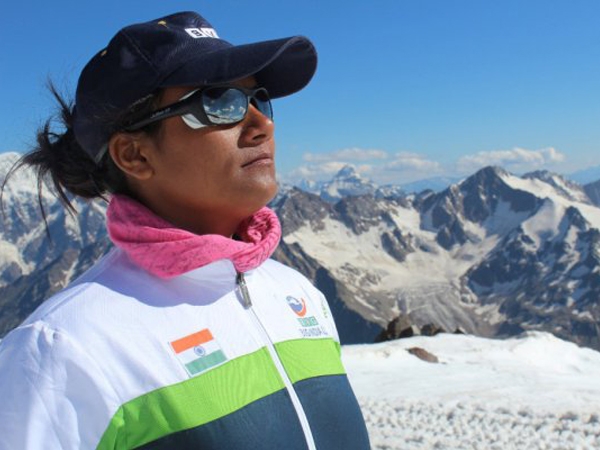It is not always that you go out on a weekend to attend a school’s literary festival where you have been invited to speak and you come back having learnt way more than you taught the 80 to 100 kids who came to attend your writing workshop.
But this is exactly what happened to me recently when I had the privilege of visiting the Vidya Valley School in Pune, during their annual, two-day literary event for their students. I went with trepidation because it has been a long time since my only daughter has left the coop, leaving me a bit rusty when it comes to interacting with teenagers and younger people. But suffice it to say that it was an eye-opener and a great learning experience for me, in more ways than one.
Sometimes, a chance meeting, a fleeting acquaintance or a quick hello can change the way you look at life. I met the principal of the school, Nalini Sengupta, a much-respected academic, three years ago when I was speaking at a TEDx event where she was on the advisory board of the organising committee. So I was quick to accept an invitation from her team to hold my Get Writing workshop for their students.
My own learning at Vidya Valley began minutes after my arrival at the school and I was invited to sit in another workshop in progress, since my workshop was to follow immediately after that one. I was intrigued when I was told it was a workshop to teach sign language to kids and was being held by Anita Iyer, the founder of EKansh Trust, an organisation that works to create awareness, acceptance and sensitisation about the world of disability.
I am glad I made it to the classroom where Anita Iyer, a friendly, everybody’s-favourite-aunt sort of lady, stood in front of a gaggle of giggly kids. “Hi, I am Anita Iyer and today I am going to teach you sign language so that you can chat not just amongst yourselves but include your deaf friends as well,” Anita’s booming voice cut across the room and everybody quietened down. “Also, I want each of you to watch me closely, so that you can repeat my actions later,” she said.
And so it began, a half hour of simple, sometimes comical, sometimes perplexing gestures using our hands, fingers, eyes and lips to convey a number of everyday questions and answers that we use to reach out to our friends and family. “How are you?” “Are you hungry?” “I’m not feeling well.”
I must confess the adult in me balked a bit at the idea of following the class and repeating the gestures. Unlike the kids who were quick on the uptake and followed Anita’s gestures enthusiastically, I was embarrassed to make faces and roll my eyes etc – the perils of adulthood, I thought to myself. It was only when Anita noticed that I was trying to hide behind a nearby pillar, that I joined the class and started following her instructions. Minutes into the exercise, I actually started enjoying it and thought to myself how ridiculously simple it was to learn and yet, so few of us have bothered to do it.
Barely had that thought entered my mind when Anita said: “Children, I want you all to think about the fact that many of us learn French, German, Spanish and a host of other foreign languages so we are able to communicate with people from other countries. But we forget that in our own country, there are so many thousands of people who are living a friendless existence because they are deaf and nobody talks to them. By learning sign language, we all have the opportunity to make so many more friends. And, we have the opportunity to make this an inclusive world where the deaf are not shunned because they can’t talk like we do…”
For a moment I held my breath. Having recently co-authored Gifted, a collection of inspirational stories from the lives of differently-abled people, I had heard many different terminologies being used while referring to people with disabilities and am still a bit squeamish about using the word ‘deaf’. Anita read my mind, again. “It is okay to call them deaf. They cannot hear and they don’t mind being called deaf. They don’t like terms such as ‘hearing impaired’ while referring to their condition. But what they really want from society is respect and dignity. And, they want to be included in our lives and become part of the larger society.”
Instantly, I thought of the dozens of people I met during the writing of Gifted. They are smart, incredibly talented people with a great zest for life and a burning desire to do something with their lives. The only difference between them and us was the fact that they were born with some form of disability. These brave men and women have conquered their disabilities but many of them are struggle with getting past the thick-headed mind set of people like us who presume they are unable to do the same things that we can do. For instance, why is it that organisations that work for the welfare of the blind , in India, largely teach the blind skills such as basket-weaving or candle-making? During the writing of Gifted, I met George Abraham, a wonderful blind man, now in his fifties, who has set up Score Foundation, an organisation that works tirelessly for the skilling and mainstreaming of the blind. Another visually impaired young woman, Nupur Jain, is a Talent Transformation Coach with technology major, Wipro and spends her time travelling and coaching employees and top leadership in the company. Just goes to prove that the “disability,” in fact, resides in our minds.
Anita’s workshop, meanwhile, ended with a magnificent rendition of India’s national anthem, Jana Gana Mana, in sign language and I got waves of goose flesh just like I get them when I sing the national anthem in English!
A month after my meeting with Anita, I am still pondering about the things she said. That sign language is very, very simple to learn. That the vocabulary is very limited when compared to other languages. And that it can make all the difference in the world of a deaf child, to be included and befriended by others around him/her.
Anita’s own tryst with sign language started early in life when the little girl would step out of her home in Mumbai and regularly see a group of deaf people in animated sign language conversation with each other. “My grandfather would have to drag me away from there because it was rude to stare but that image stuck somewhere in the back of mind till one day I grew up and realised that teaching people sign language could be a great way to affect change. If at least two to three of the kids from each of my sign language workshops practise it and speak with the deaf people they run into, I consider that fruit of my labour. These are the seeds I am planting. Someday they will sprout and grow into large trees that provide succour to many…”
More On >> Balancing Act



